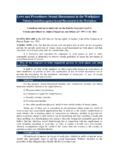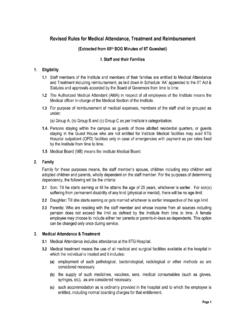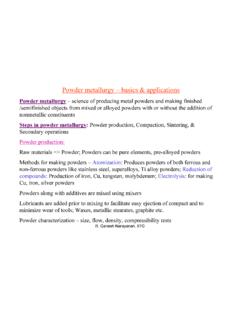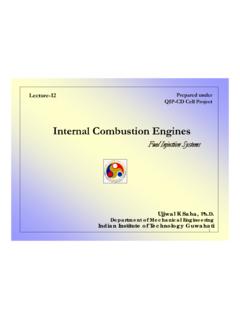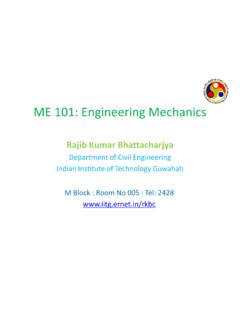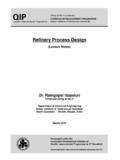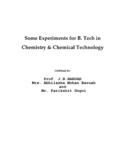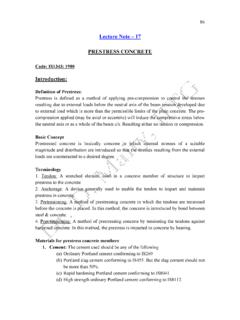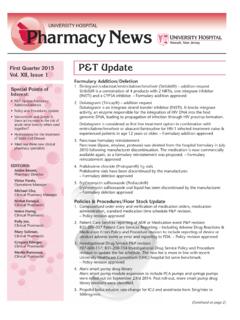Transcription of Drowsy Driver Detection using Representation Learning
1 Drowsy Driver Detection using Representation Learning Kartik Dwivedi, Kumar Biswaranjan and Amit Sethi Department of Electronics and Electrical Engineering Indian Institute of Technology Guwahati, India Abstract The advancement of computing technology over the physiological signals yields better Detection accuracy, these are years has provided assistance to drivers mainly in the form of not accepted widely because of less practicality. A third set of intelligent vehicle systems. Driver fatigue is a significant factor in techniques is based on computer vision systems which can a large number of vehicle accidents.
2 Thus, Driver drowsiness recognize the facial appearance changes occurring during Detection has been considered a major potential area so as to drowsiness [6, 7, 8]. Physiological feature based approaches prevent a huge number of sleep induced road accidents. This are intrusive because the measuring equipment must be paper proposes a vision based intelligent algorithm to detect attached to the Driver . Thus, visual feature based approaches Driver drowsiness. Previous approaches are generally based on have recently become preferred because of their non-intrusive blink rate, eye closure, yawning, eye brow shape and other hand nature.
3 In this paper, we propose a new scheme based on engineered facial features. The proposed algorithm makes use of extraction of visual features from the data without human features learnt using convolutional neural network so as to intervention. These visual features have been learnt using a explicitly capture various latent facial features and the complex non-linear feature interactions. A softmax layer is used to classify model of deep Learning known as convolutional neural the Driver as Drowsy or non- Drowsy .
4 This system is hence used networks. The feature maps produced by convolving the learnt for warning the Driver of drowsiness or in attention to prevent weights with input image act as the features for Driver traffic accidents. We present both qualitative and quantitative drowsiness Detection . using these set of features a soft-max results to substantiate the claims made in the paper. layer classifier is used to finally classify the frames extracted as Drowsy or non- Drowsy . Further, a set of extra methodologies are suggested that could be combined with the scheme in the Keywords Driver Drowsiness, Artificial Intelligence, Feature Learning , Deep Learning , Convolutional Neural Networks future to make the technique more robust.
5 I. INTRODUCTION II. RELATED WORK. Driver fatigue is a significant factor in a large number of There are some significant previous studies about vehicle accidents. Fatalities have occurred as a result of car drowsiness Detection and fatigue monitoring. Many computer accidents related to Driver inattention, such as distraction, vision based schemes have been developed for non-intrusive, fatigue, and lack of sleep. Studies and experiments have real-time Detection of Driver sleep states with the help of substantiated the fact that driving performance deteriorates various visual cues and observed facial features.
6 An observed with increased drowsiness [1]. The US National Highway pattern of movement of eyes, head and changes in facial Traffic Safety Administration has estimated approximately expressions are known to reflect the person's fatigue and 100,000 crashes each year caused mainly due to Driver fatigue vigilance levels. Eye closure, head movement, jaw drop, or lack of sleep [2]. eyebrow shape and eyelid movement are examples of some features typical of high fatigue and Drowsy state of a person. Autonomous systems designed to analyze Driver exhaustion To make use of these visual cues, a remote camera is usually and detect Driver drowsiness can be an integral part of the mounted on the dashboard of the vehicle which, with the help future intelligent vehicle so as to prevent accidents caused by of various extracted facial features, analyses Driver 's physical sleep.
7 A variety of techniques have been employed for vehicle conditions and classifies the current state as Drowsy /non- Driver fatigue and exhaustion Detection . Driver operation and Drowsy . It has been concluded that computer vision techniques vehicle behavior can be implemented by monitoring the are non-intrusive, practically acceptable and hence are most steering wheel movement, accelerator or brake patterns, promising for determining the Driver 's physical conditions and vehicle speed, lateral acceleration, and lateral displacement.
8 Monitoring Driver fatigue [9]. These are non-intrusive ways of Driver drowsiness Detection , but are limited to the type of vehicle and Driver conditions [3]. Most of the published researches based on computer vision Another set of techniques focuses on monitoring of techniques are image based real-time schemes for fatigue physiological characteristics of the Driver such as heart rate, monitoring using typical facial features. Singh et al. [10]. pulse rate, and Electroencephalography (EEG) [4]. Research in developed a vision based scheme based on eye blink duration these lines have suggested that as the alertness level decreases EEG power of the alpha and theta bands increase [5], hence using the proposed mean sift algorithm.
9 Saito et al. [11] uses providing indicators of drowsiness. Although the use of these Driver 's line of sight to detect the mental and physical conditions. horng et al. [12] uses edge information for features from the unlabeled input data. Most of the models use localizing eyes and dynamical template matching for eye multiple hidden layers to learn complex, non-linear, high tracking for Driver fatigue Detection . Smith et al. [13] dimensional Representation which are fed to a classifier for describes an algorithm which relies on optical flow and color high level of classification task.
10 Predicates to robustly track a person's head and facial features. Their study showed that the performance of their system is Convolutional neural nets are a variation of feed forward comparable with those of techniques using physiological neural nets which incorporates three unique features: local signals. receptive fields, sharing of weights and sometimes spatial or temporal pooling [19]. All the filters of convolutional net share the weights with all the pixels of input image. By New techniques are based on machine Learning algorithms restricting the weights to take the same value for different to detect Driver drowsiness levels.
